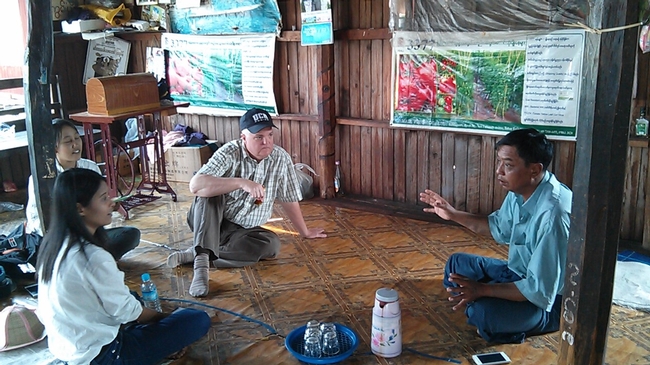Myanmar (formerly Burma) is located in Southeast Asia, bordered by Bangladesh, India, China, Laos and Thailand. I was asked by the United States Agency for International Development (U.S. AID) to travel to Myanmar to use my training and experience as an academic advisor affiliated with the UC Statewide Integrated Pest Management Program and UC Cooperative Extension in Riverside County to share information about basic IPM and pesticide safety.

With the use of small tractors and other mechanized farm equipment, agricultural development is slightly more advanced in Myanmar than Bangladesh, which I visited in September 2015. Chemical pesticide use in Myanmar is intensive with little regulation or guidance. Chemical contamination of agricultural crops is widespread and mass poisoning does occur.
U.S. AID works to end global poverty and help societies become more independent. One way they do that is by helping countries like Myanmar improve their agricultural development. U.S. AID and Winrock International's Value Chain Project sent me to Myanmar as part of an ongoing effort in Asia to instruct growers in basic IPM and the safe and effective use of pesticides.

The growers lack of information on using pesticides safely and effectively seemed to be a recurring theme in Southeast Asia. The growers were not given access to pesticide labels or safety data sheets. In fact, the growers are given virtually no information at all on how to use the chemicals they were applying on their farms. The chemical manufacturers are responsible for this.
Farmers would often apply materials multiple times a week (sometimes more frequently), not knowing about the recommended application rate, re-entry or harvest interval. There's a real need for education in Southeast Asia. Ultimately, the growers and the consumers of contaminated agricultural products are the ones suffering.
Over two weeks, I held four all-day workshops, mostly for growers, with a final workshop with representatives of local media agencies to teach them basic pest management principles and pesticide safety. When I asked workshop participants if any of them knew someone who had gotten sick or had died from pesticide exposure, virtually everyone raised their hands.
Some growers acknowledged that their practices were making them sick, but that they felt they had few options available to them. As a result, the US-based NGO Internews created a public service announcement (PSA) illustrating the use of personal protective equipment when applying pesticides in Myanmar. The PSA is currently being broadcast on Myanmar television and can be seen below.
This opportunity to educate the public on safe pesticide use is not enough. I recommend monthly pesticide tours be set up across the country to emphasize the need for safe and effective use of pesticides. The use of extension outreach is invaluable in situations like this.

The facilitation of the University of California's Global Food Initiative by U.S. AID and Winrock International is extremely useful. The world as we know it is shrinking with globalization of people and products. We need to reach out to others and give them the benefit of our experience. UC IPM is doing that.